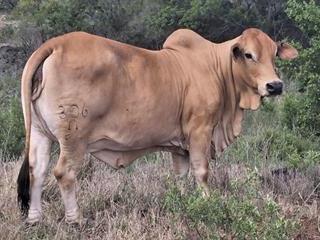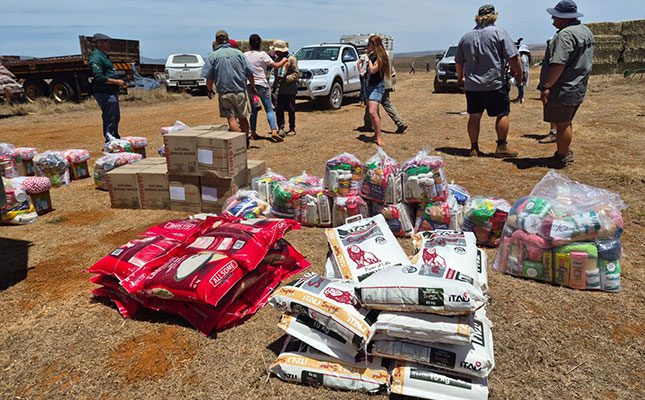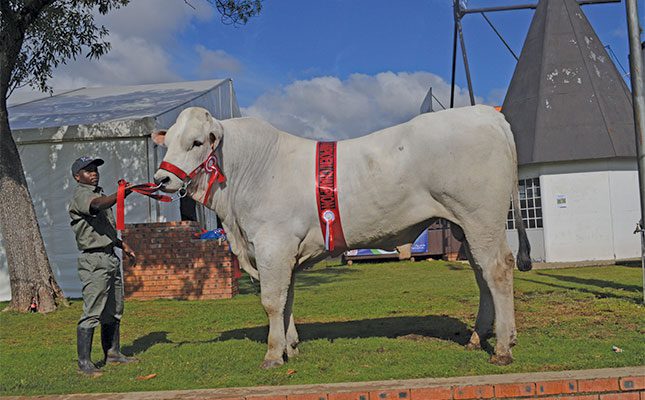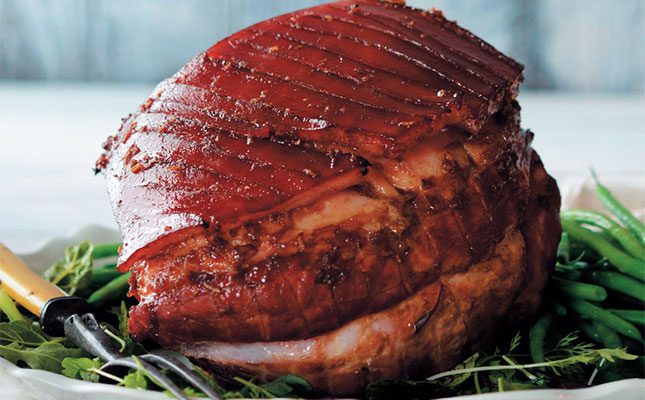The Sezela Cane Supply Area is the bedrock of South Coast sugar production, but sloped lands, marginal soils and rainfed conditions have kept yield and sucrose percentage below average. New best management practices developed by industry bodies are not only increasing yield, but also environmental sustainability.
The SA Sugar Research Institute (SASRI) has developed best management practices, now recommended by Illovo Sugar, and the Sezela Cane Supply Area (SCSA) on the KZN South Coast is implementing them. Due to pressure from environmentalists, one of these practices’ main aims is to reduce the impact of cane growing and milling on the environment.
The SA Sugar Association (SASA’s) south coast extension specialist Dirk McElligott explains, “Sezela has been the bedrock of cane farming on the South Coast for decades. Growers’ problems increased as the industry matured, including achieving optimal cane yields, protecting the environment, and improving and maintaining soil health, all to maintain a sustainable cane supply to the Sezela sugar mill.”
Dirk says the SCSA currently has 42 303ha of land under cane production, farmed by 205 large-scale and about 4 000 small-scale registered growers. The Sezela sugar mill crushes an average of 2 million tons of cane every March to December milling season, for an average sucrose yield of 12,78%.
Within the SCSA, Illovo Sugar directly owns about 5 900ha of sugarcane land yielding an average of 310 000t of cane per year. This is commonly known as a miller-cum-planter (MCP) system, where a milling company also owns sugarcane land managed by company managers.
Overcoming production limitations
Dirk continues, “One of the biggest problems facing South Coast canegrowers is trying to increase local cane yields above the area’s current plateau of an average 62t/ha. From 1997 to 2006, the South African sugar industry’s average cane yield was 67,92t/ha from 300 000ha to nearly 326 000ha. The sucrose percentage of cane has been an average 13,51% between 2003 and 2008. “The SCSA’s below-average production per hectare and sucrose percentage are primarily caused by the area’s often steeply sloped lands, marginal soils and rainfed conditions. The relatively stagnant figures are a concern to farmers, the mill, local extension officers and sugar technologists alike, so stakeholders have implemented joint ventures to remedy the situation.”
SASA spokesperson Jennifer Crawford adds, “SASA and SASRI have promoted initiatives in the area, such as soil and water conservation, sugarcane variety improvement, soil health maintenance, and pest and disease management.
“These have all been adopted under the leadership of field manager Brian Thompson and farm managers Derrick Rein, Dudley Daniel, Gift Nyawuse, Nigel Eady and Muzi Gasa.” Jennifer adds these initiatives have been successfully incorporated into Illovo’s daily sugarcane farming operations. “They show farming on slopes can have minimal impact on natural resources such as soil, water and natural vegetation, while improving the average yield to 69t/ha for the 2008 sugar milling season.”
Illovo’s showcase
Over the years, Illovo Sugar Limited has been the SCSA’s showcase for better management practices, correctly implemented through close collaboration with SASRI’s extension and specialist staff. “In a nutshell, Illovo Sugar Ltd implements the best and most economically viable practices that have the least negative impact on our natural resources,” explains Illovo Sugar’s agricultural manager Edgar Bruggemann. Edgar says his department is trying to improve production methods on at least 17% of the land, or 7 650ha, belonging to the 34 new freehold growers (NFG’s) within the SCSA, including Illovo MCP’s 5 900ha, or 13% of land, in the same area. An NFG field manager and section manager focus on grower development and guide production on the farms.
“While selected best management practices are adopted widely throughout the SCSA, Illovo Sugar’s MCPs try to implement all the required practices at every planting,” Edgar says. “This includes correct field layout, improving soil health and plant nutrition, using improved and relevant sugarcane varieties, and implementing best practices at harvesting.”
Land use plans as tools
For best practice soil and water conservation, the first step is drawing up a land use plan (LUP) for each farm. Assessing the farms’ natural resources is key, and soil and slope characteristics are particularly important. The LUP provides a management plan for a farm’s road network, and a conservation plan for non-farmed areas.
Dirk says all the farms’ surface water management structures, such as contour roads and waterways, are designed and implemented according to SASRI norms. This minimises soil erosion, while maximising the efficiencies of extracting harvested cane from the farm to the Sezela mill.
Other on-farm practices follow LUP guidelines, benefiting the soil and natural environment. They include minimum tillage, strip replanting, strip harvesting and green cane harvesting, or “trashing”. In strip replanting, a set number of rows of seed cane are planted in a field and a set number are left unplanted. For the next planting the order is reversed. The soil not planted to cane has a rest period without the whole field lying unproductive.
The LUP also makes recommendations to improve sugarcane variety. Focus areas include the nursery schemes where seed cane is developed and grown under local conditions, breeding soil- and slope-specific cane varieties, carefully selecting harvest months, determining ideal cane harvest ages and developing cane varieties less susceptible to the area’s major pests and diseases.
Pest management
Dirk continues, ”Eldana saccharina, the African sugarcane borer moth, is a major pest and costs the sugar industry millions in losses every year. No single management approach will eradicate it – an integrated management strategy is necessary to maintain populations at acceptable levels. “Our Integrated pest management strategy for Eldana includes regular surveys to identify susceptible areas; harvesting infected cane fields earlier; planting more Eldana-resistant cane varieties; managing nitrogen levels in cane fields, which directly affect Eldana infestations; maintaining good field hygiene; planting pest-free seedcane; planting crops either repelling Eldana or attracting it away from sugarcane fields; minimising moisture stress in cane fields; and applying a registered pesticide as a last resort.”
Harvesting green cane
To improve soil health, MCPs and NFGs are encouraged to harvest green cane instead of burning it beforehand, reduce soil compaction, use green manure crops or fallow periods, use inorganic fertilisers according to SASA’s Fertiliser Advisory Service and add fly ash, filter cake and lime to the soils. Between new plantings of sugarcane, green manure crops such as beans or other legumes are used. “The green manure crops break the sugarcane monocropping cycle and let fields rest,” says Dirk. “Some provide nitrogen to the soils, and all increase their organic matter and microbial activity, break the pest and disease cycles and protect against erosion.“
Dirk says the main green manure crops planted in the SCSA are sunhemp, dry beans and, in the cooler inland areas, white or black oats. The dry beans provide a source of food and cash. “One of our more unusual soil protection methods is using teams of oxen to prepare fields on steep slopes for replanting,” he adds. “They can work where wheeled machinery can’t and reduce soil disturbance.” He continues, “One of our biggest hurdles has been finding ways to improve methods for green cane harvesting,” says Dirk. “Instead of using the traditional method of burning all the trash off sugarcane before it’s harvested, we harvest it unburnt so much of the trash can be left on the fields as organic matter, improving soil moisture retention.
“Harvested green cane’s quality also deteriorates more slowly than burnt cane. A major challenge is the cane-cutters prefer harvesting burnt cane as it’s easier and they can cut more per day. We’re testing various mechanical methods to harvest our green cane, although they must be suitable for sloping lands.” Dirk says while green cane harvesting tends to be more expensive due to decreased labour productivity and poorer payloads, the indirect cash benefits far outweigh this. A study also showed the yields of farmers who only harvested green cane improved by about 15t/ha, over those who burned cane.
Environmentally conscious
SASA’s manager for natural resources Rory Lynsky concludes, “Environmental committees formed by members of the various mill supply areas in South Africa cover widespread issues. These range from on-farm to the surrounding sugarcane growing and milling areas. Farmers are these committees’ eyes and ears and are mostly eager to help limit their industry’s negative environmental impact and are eager to comply with relevant laws. “The long-standing Sezela Local Environmental Committee is there to help improve management practices for both small-scale and large-scale sugarcane growers in the area.
“Regionally, the World Wildlife Foundation have worked with growers in the north Midlands to develop a best management system, called the Sustainable Sugarcane Farm Management System (SuSFarMS) which is now being finalised. SASA is promoting and supporting the system.”
Contact Dirk McElligott on (039) 975 1377
or 083 655 5012, fax (039) 975 2078 or
e-mail [email protected]. Visit the SASA website at www.sasa.org.za. |fw








